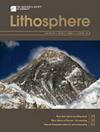A Long-Lived Accretionary Process during the Amalgamation of the North China Craton: Insights from Neoarchean–Paleoproterozoic Polyphase Magmatism in the Lüliang Complex
IF 1.7
4区 地球科学
Q3 GEOCHEMISTRY & GEOPHYSICS
引用次数: 0
Abstract
Abstract There has been a long debate regarding the timing of the final amalgamation of the North China Craton, which is considered to have occurred either during the Neoarchean or Paleoproterozoic era. One major point of contention is whether there existed a long-lived subduction lasting through the Neoarchean to Paleoproterozoic. The Lüliang Complex contains multiphases of magmatism and thus represents the most viable region to address this controversy. In this study, we carried geochronological and geochemical analysis on the representative granitoids. Secondary ion mass spectrometry U–Pb dating revealed four distinct granitoid groups emplaced at 2531 ± 4, 2189–2173, 2027 ± 25, and 1852 ± 41 Ma, respectively. Notably, the 2531 Ma granitic gneiss was identified for the first time in this region. Based on the geochemical characteristics, the granitoids can be divided into two types. The 2531 and 2027 Ma groups display I-type features, while the 2189–2173 and 1852 Ma groups exhibit A-type geochemical affinities. Both I-type groups exhibit enrichment in Rb, depletion in Nb, Ta, and Ti, moderate fractionated REE patterns, substantial negative Eu anomalies, low Sr/Y ratios, and positive εHf(t) (+3.51 to +5.53 and +5.59 to +7.32, respectively), indicating that they were generated from partial melting of the juvenile mafic crust. In contrast, the 2189–2173 Ma granitoids belong to A2-type and were most likely generated by the partial melting of felsic rocks in the back-arc region, while the 1852 Ma granitoids belong to A1-type and were most possibly the result of partial melting of mafic-intermediate rocks during the post-collisional stage. Based on the records of A-type granitic magmatism and the ~1950 Ma peak metamorphism throughout the Trans-North China Orogen, we propose that a long-lived subduction process (2531–1950 Ma) can mostly explain the existing geological phenomena. It is likely that the subduction between the Eastern and Western Blocks should have commenced at ~2531 Ma, followed by a long-lived subduction. The two blocks ultimately collided with each other to form the North China Craton at ~1950 Ma, which triggered post-collisional exhumation and partial melting at ~1852 Ma.华北克拉通合并过程中的长周期增生过程:新太古代-古元古代多相岩浆作用的启示
华北克拉通最终合并的时间一直争论不休,人们认为华北克拉通最终合并发生在新太古代或古元古代。一个主要的争论点是是否存在从新太古代到古元古代的长期俯冲作用。梁杂岩包含多期岩浆活动,因此是解决这一争议最可行的区域。本文对具有代表性的花岗岩类进行了年代学和地球化学分析。二次离子质谱U-Pb测年显示,在2531±4 Ma、2189-2173 Ma、2027±25 Ma和1852±41 Ma的位置发现了4个不同的花岗岩群。值得注意的是,该区首次发现2531 Ma花岗质片麻岩。根据地球化学特征,花岗岩类可分为两类。2531和2027 Ma群表现为i型特征,2189 ~ 2173和1852 Ma群表现为a型地球化学亲和。这两个i型组Rb富集,Nb、Ta、Ti亏缺,REE分选模式适中,Eu负异常明显,Sr/Y比值较低,εHf(t)正(分别为+3.51 ~ +5.53和+5.59 ~ +7.32),表明它们是由幼年基性地壳部分熔融形成的。2189 ~ 2173 Ma花岗岩类为a2型,极有可能是弧后地区长英质岩石部分熔融作用的产物;1852 Ma花岗岩类为a1型,极有可能是碰撞后阶段镁质-中间岩部分熔融作用的产物。根据横贯华北造山带的a型花岗质岩浆活动记录和~1950 Ma的峰值变质作用,认为2531-1950 Ma的长周期俯冲作用可以解释现有的地质现象。东、西地块之间的俯冲可能开始于~2531 Ma,随后是一个长期的俯冲。两块板块最终在~1950 Ma碰撞形成华北克拉通,并在~1852 Ma引发了碰撞后的挖掘和部分熔融。
本文章由计算机程序翻译,如有差异,请以英文原文为准。
求助全文
约1分钟内获得全文
求助全文
来源期刊

Lithosphere
GEOCHEMISTRY & GEOPHYSICS-GEOLOGY
CiteScore
3.80
自引率
16.70%
发文量
284
审稿时长
>12 weeks
期刊介绍:
The open access journal will have an expanded scope covering research in all areas of earth, planetary, and environmental sciences, providing a unique publishing choice for authors in the geoscience community.
 求助内容:
求助内容: 应助结果提醒方式:
应助结果提醒方式:


